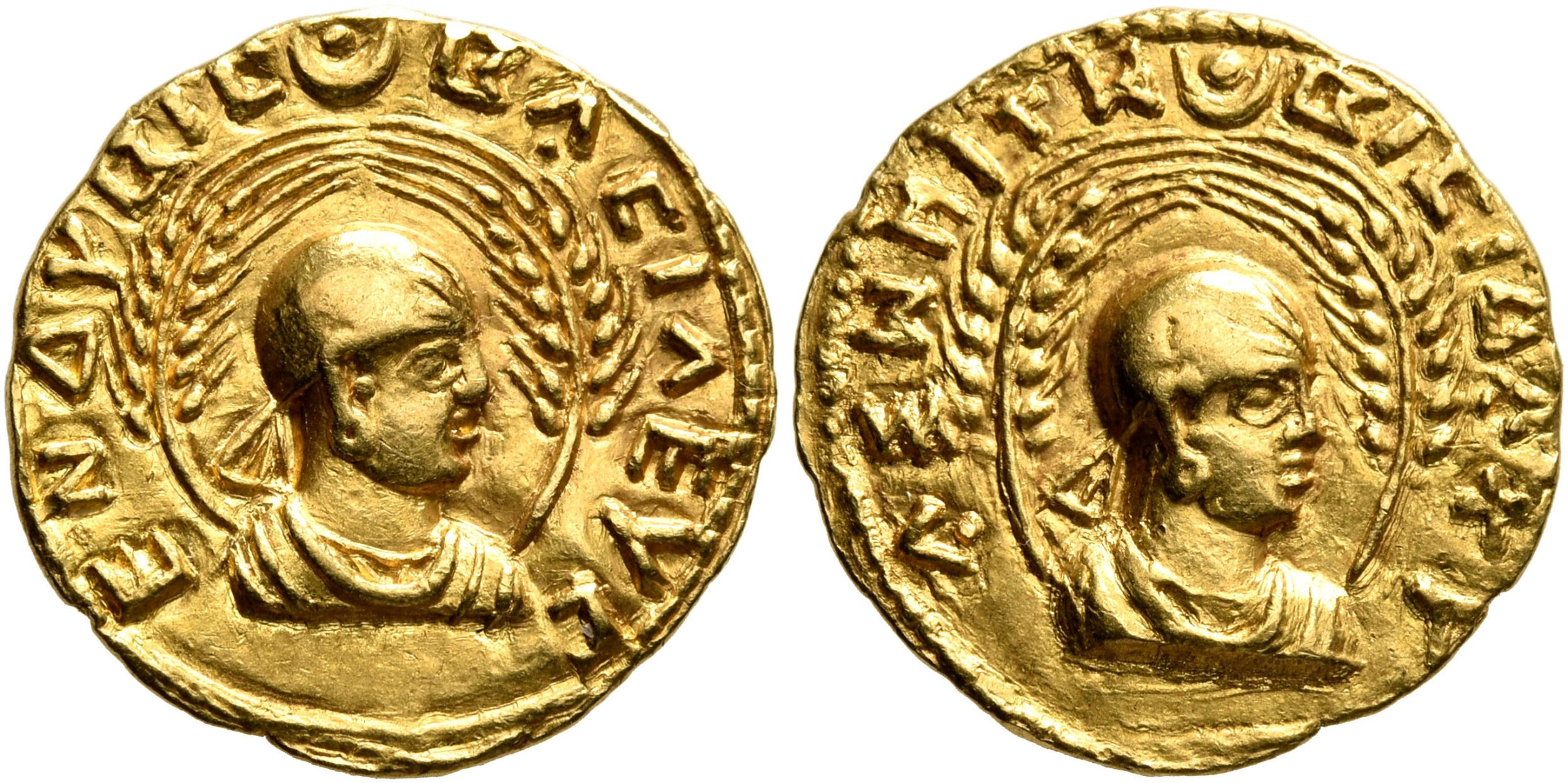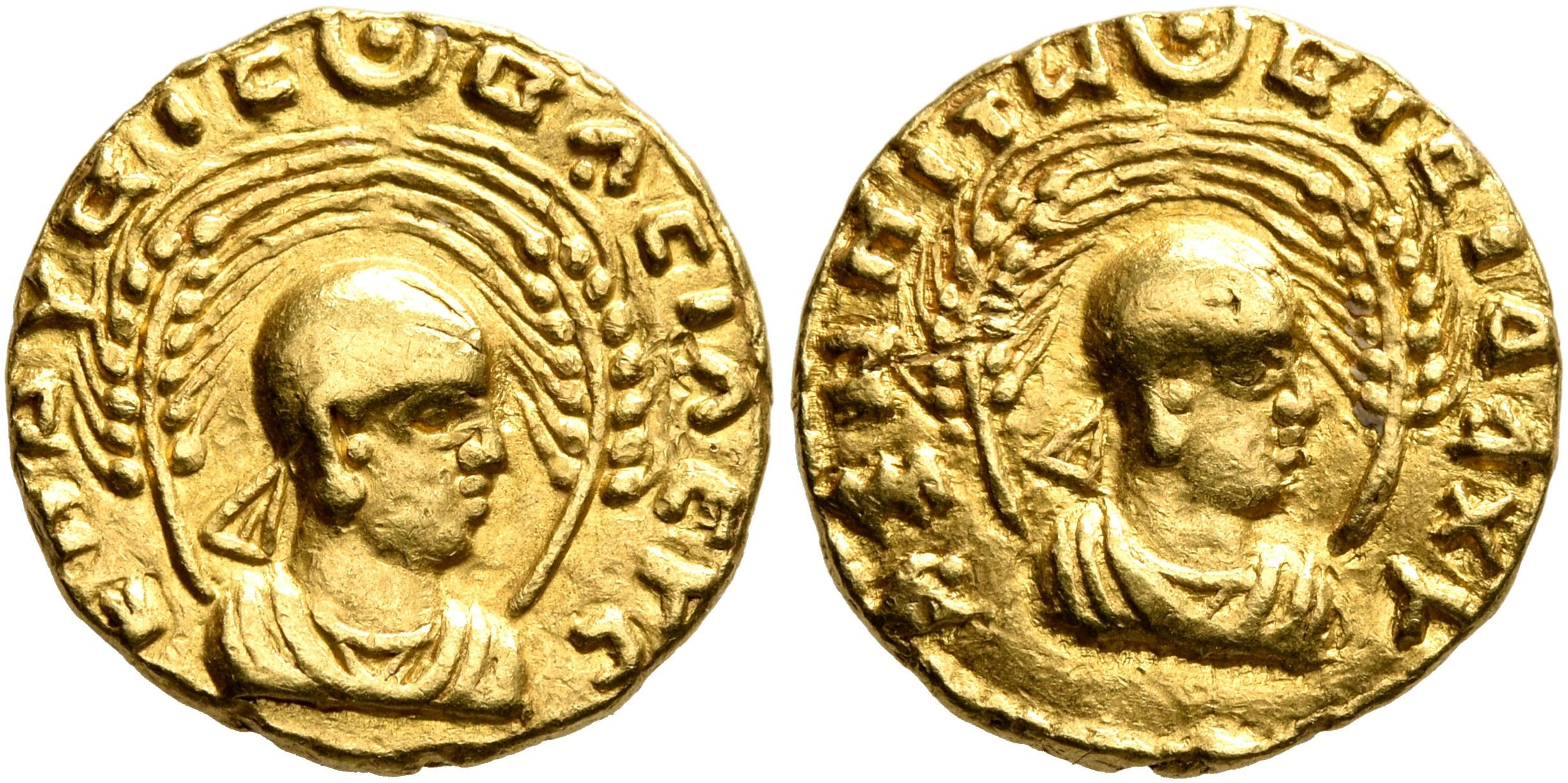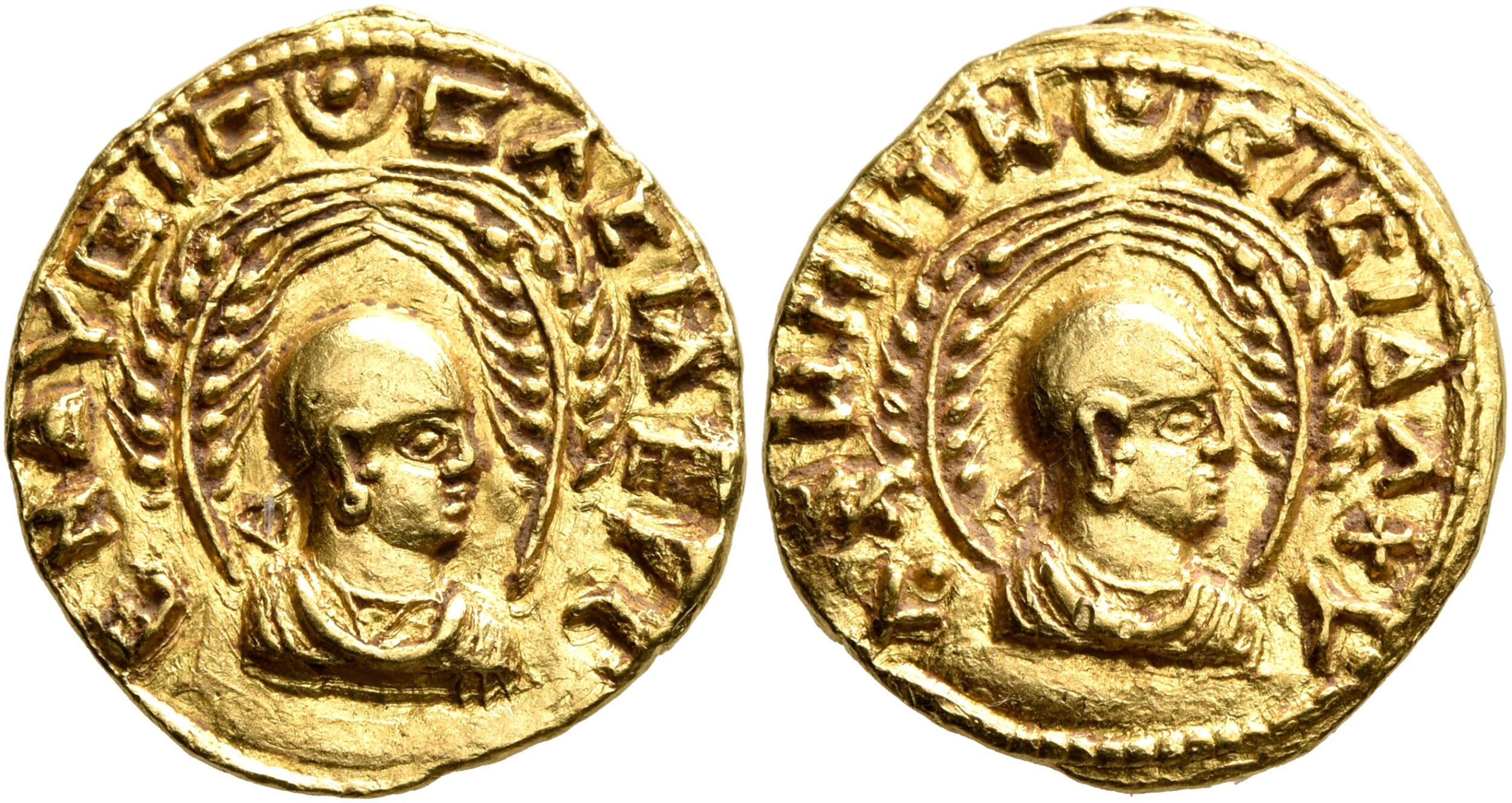

Endybis, circa 300-310. Chrysos (Gold, 16 mm, 2.68 g, 12 h). ENΔΥBIC - ΒΑCIΛEYC Draped bust of Endybis to right, wearing tight-fitting head cloth and circular earring; to left and right, ears of barley; above, pellet in crescent. Rev. ΑξⲰΜΙΤⲰ - BICI ΔAXY Draped bust of Endybis to right, wearing tight-fitting head cloth and circular earring; to left and right, ears of barley; above, pellet in crescent. Hahn, Aksumite, 1. Hahn & Keck, MAKS, 1. Munro-Hay, AC, type 1. Boldly struck and well centered, a beautiful example of Axum's first gold coinage. Slightly wavy flan, otherwise, good extremely fine.
From the Dr. Stephan Coffman Collection, privately acquired from Solon Numismatics.
Endybis was the first Axumite king to strike coins, which were consciously modelled after the Roman currency introduced by Diocletian in 286 and 294. The surprising choice to place the king on both sides likely reflects the central role played by the Axumite rulers in state ideology, and may have been influenced by the Himyarite coinage of South Arabia.
Leu, okt. 2023, lot 266, 4'200 CHF (Euro 4419)

Endybis, circa 300-310. Chrysos (Gold, 15 mm, 2.65 g, 12 h). ENΔΥBIC - ΒΑCIΛEYC Draped bust of Endybis to right, wearing tight-fitting head cloth and circular earring; to left and right, ears of barley; above, pellet in crescent. Rev. ΑξⲰΜΙΤⲰ - BICI ΔAXY Draped bust of Endybis to right, wearing tight-fitting head cloth and circular earring; to left and right, ears of barley; above, pellet in crescent. Hahn, Aksumite, 1. Hahn & Keck, MAKS, 1. Munro-Hay, AC, type 1. A well centered and attractive example. Minor flan faults on the obverse and with light deposits on the reverse, otherwise, nearly extremely fine.
Leu, okt. 2023, lot 267, 3'150 CHF (Euro 3314)

Endybis, circa 300-310. Chrysos (Gold, 16 mm, 2.82 g, 12 h). ENΔΥBIC - ΒΑCIΛEYC Draped bust of Endybis to right, wearing tight-fitting head cloth and circular earring; to left and right, ears of barley; above, pellet in crescent. Rev. ΑξⲰΜΙΤⲰ - BICI ΔAXY Draped bust of Endybis to right, wearing tight-fitting head cloth and circular earring; to left and right, ears of barley; above, pellet in crescent. Hahn, Aksumite, 1. Hahn & Keck, MAKS, 1. Munro-Hay, AC, type 1. Sharply struck and with unusual small portraits. Minor deposits, otherwise, extremely fine.
From the Dr. Stephan Coffman Collection, ex Spink E-Circular 13, 16 December 2021, 8555.
Leu, okt. 2023, lot 268, 1'900 CHF (Euro 1999)
The coins of Endubis are dated to c. 295 to c. 310 and are "undoubtedly [...] the oldest Aksumite coins".[3] The weight of the gold coins issued in his reign are equivalent to "the weight of the half-aureus or quinarius of the last half of the 3rd century AD."[4] More precise clues can be seen in the currency reforms during the reign of Diocletian, who reorganised the issuing of gold coins in 286 and silver coins in 294, the latter after having been suspended for several decades.[3] As such, it is likely that the coins of Endubis, which were minted in gold, silver and copper, do not date to before c. 295.[3]
The coins of Endubis set the design that his successors followed for the most part. Both obverse and reverse are characterized by a profile bust of the rule facing to the right, with a stalk of two-row barley on either side between the bust and the inscription. Endubis and his pagan successors include in the legend at the top of the coin a "crescent representing perhaps the Moon-god Sin and the disc representing Shams, the Sun-goddess."[5]
Two mottos in Greek characterize the coins of Endubis:
On some coins Endubis described himself as "ΑΞΩΜΙΤΩ ΒΑϹΙΛΕΥϹ", "king of Axum". bron